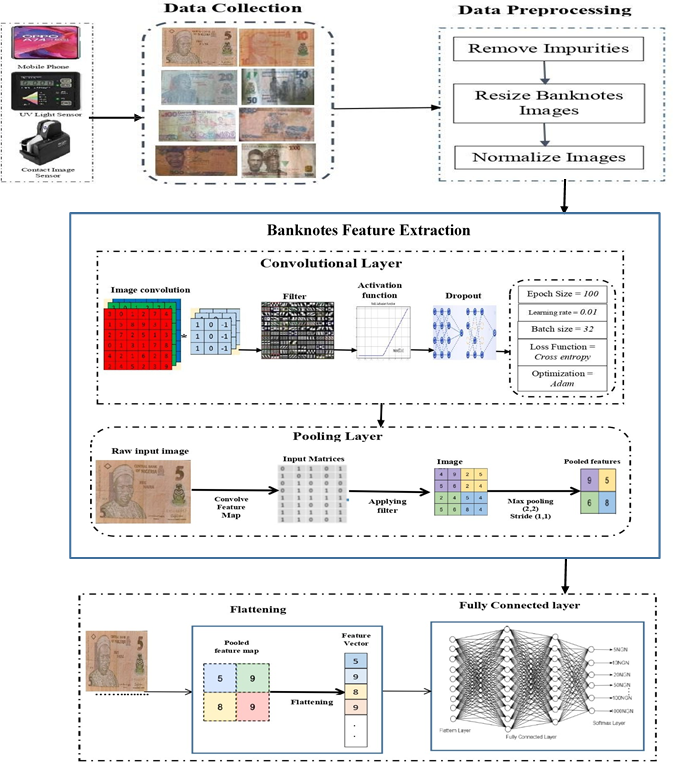Convolutional neural networks method for folded naira currency denominations recognition and analysis
Keywords:
Naira, Banknote, Banknote Denomination, currency, folded BanknoteAbstract
Sorting banknotes automatically in payment facilities or freewill donation boxes involves many tasks such as recognizing banknote denomination, fitness classification, and counterfeit detection. Different studies have addressed these problems using foreign currencies. In other words, very few researches have been conducted on naira banknote denomination recognition. A few studies did not consider folded naira banknote denomination recognition. To overcome this, we propose a Machine Learning Based Folded Banknote Denomination Recognition System. The proposed system automatically extracts relevant features and characteristics of the naira currency denomination in different positions, orientations, and folds. This automatic representation of the naira currency denomination enables the proposed system to reduce over-reliance on suggested characteristics, improve performance accuracy, and generalize the proposed system to new problems. Moreover, the proposed system was modeled using object-oriented analysis and design methodology, and implemented in the Keras framework interfaced with Tensorflow. Then, the Softmax classification algorithm was used to classify each Naira banknote denomination. The proposed machine learning-based folded banknote denomination recognition achieved an average accuracy of 95%, which shows the generalization ability of the proposed system to recognize folded banknote denominations in different orientations, positions, and folded forms.

Published
How to Cite
Issue
Section
Copyright (c) 2024 Nneka Ernestina Richard-Nnabu, Chinagolum Ituma, Henry Friday Nweke

This work is licensed under a Creative Commons Attribution 4.0 International License.







